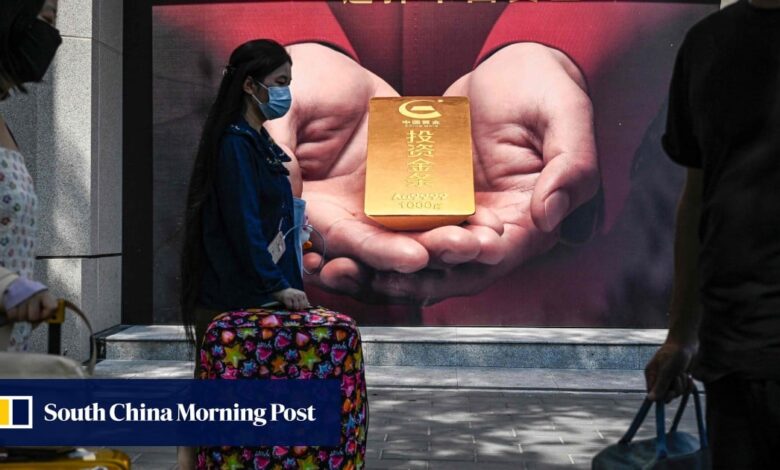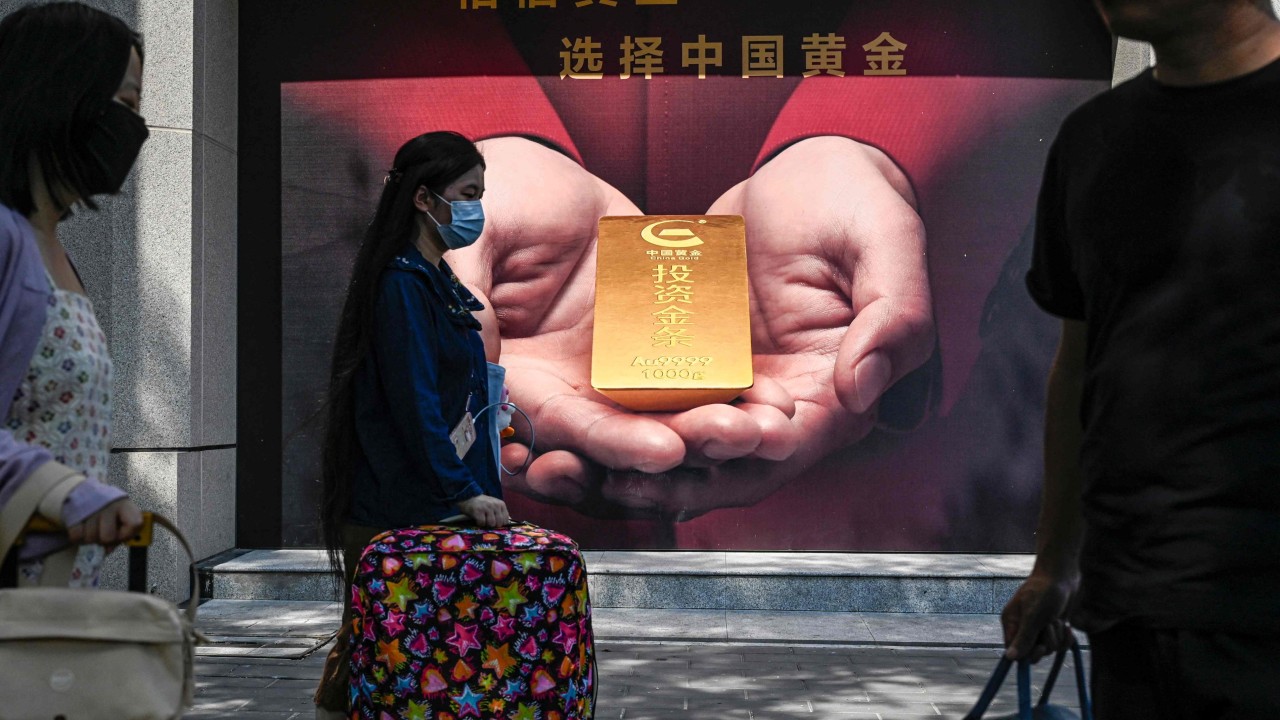China’s consumers dig deep amid economic concerns with splurge on gold bars, coins


Limited access to alternative investment channels and hedging tools, such as bitcoin, and concerns over China’s economic prospects led to purchases of gold bars and coins surge by 46 per cent in the first half of the year, analysts said.
Purchases increased to 213.6 metric tonnes (7.5 million ounces), the China Gold Association said on Sunday.
The figure represented 40 per cent of the national gold consumption in the first half of the year, the report added.
Overall, Chinese consumers bought 523.8 metric tonnes of gold, including bars, coins and jewellery, in the first half of the year, marking a 5.61 per cent decrease from the previous year.
Chinese consumers, though, reduced their expenditure on expensive gold jewellery with the global gold price expected to peak further, the association said.
Over half of the gold consumption in the first half of the year was in jewellery, yet the segment saw a 26.68 per cent decline year-on-year to 270 metric tonnes.
The poor consumer sentiment may negatively affect gold jewellery sales, which generally have a higher price premium
Chinese residents are also seen to have curtailed their gold jewellery buying spree due to reduced purchasing power amid low domestic demand.
“There are very limited choices in asset preservation due to capital control and the lack of investment options,” said Gary Ng, senior economist with Natixis Corporate and Investment Banking.
“The poor consumer sentiment may negatively affect gold jewellery sales, which generally have a higher price premium. However, the demand for gold bars will stay resilient for investment purposes,” Ng added.
Since the start of the year, the price of gold has continued to reach record highs, driven by geopolitical uncertainties among investors, market expectations of an imminent interest rate cut by the US Federal Reserve and soaring purchases by Chinese residents using gold as a hedge.
The international gold price reached US$2,482.4 per ounce on 17 July, up from around US$2,078 at the start of the year, representing a nearly 20 per cent increase.
Meanwhile, the Shanghai Composite Index has stood lower than 2,900 since Thursday, indicating pessimistic investor sentiment.
In addition, China’s industrial use of gold fell by 0.53 per cent year on year in the first half of the year.
“This is due to the substantial fluctuations in gold prices, which increase the production and operational risks for gold processing and sales enterprises, leading to reduced purchases by wholesale and retail businesses and a significant drop in the processing volume of jewellery enterprises,” according to the China Gold Association.
The association estimated that the average annual price of gold would rise by 16 per cent year on year to US$2,250 per ounce this year, while gold purchases by central banks are expected to remain high at 1,000 tonnes this year, nearly double the average from 2010 to 2019.
Source link



